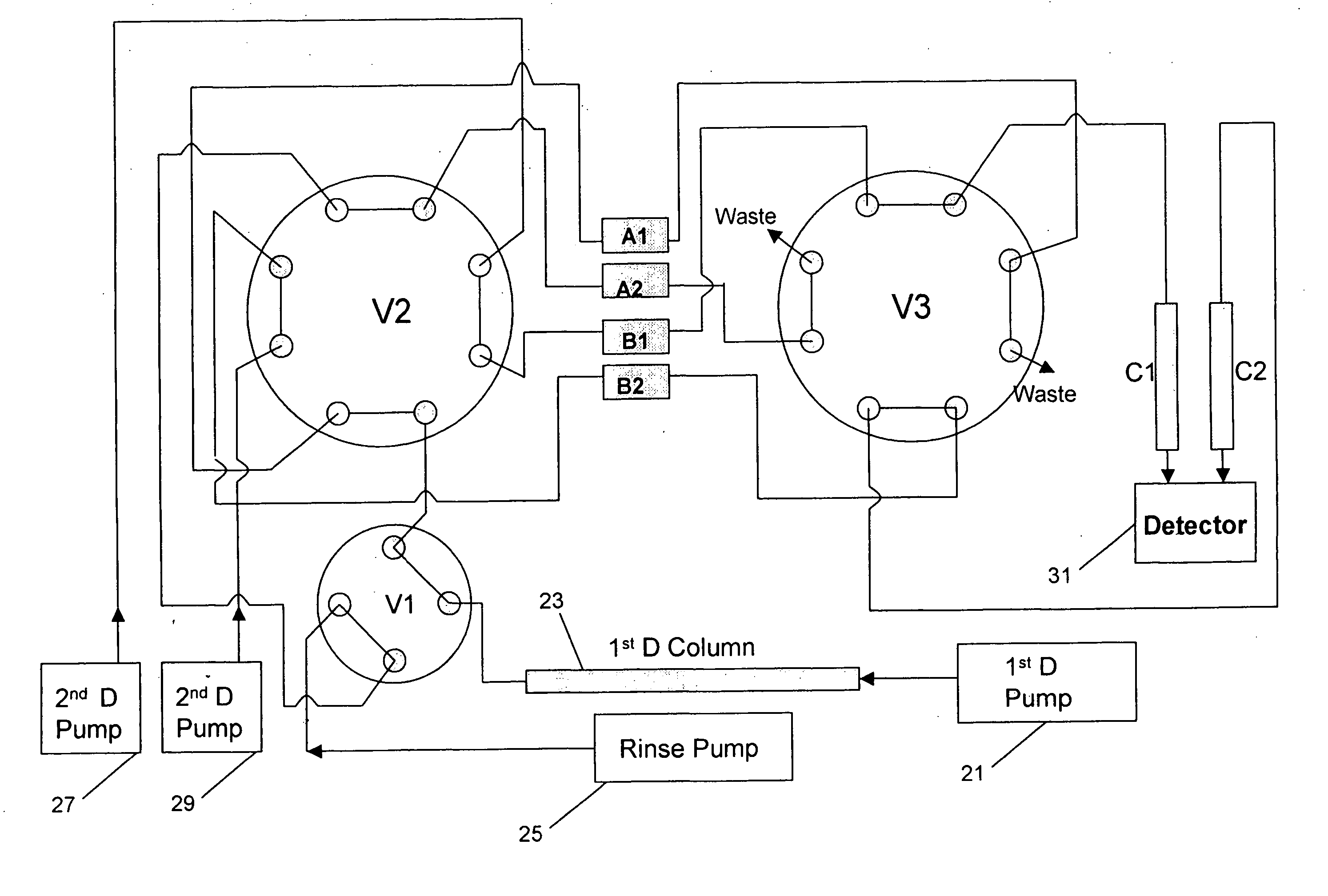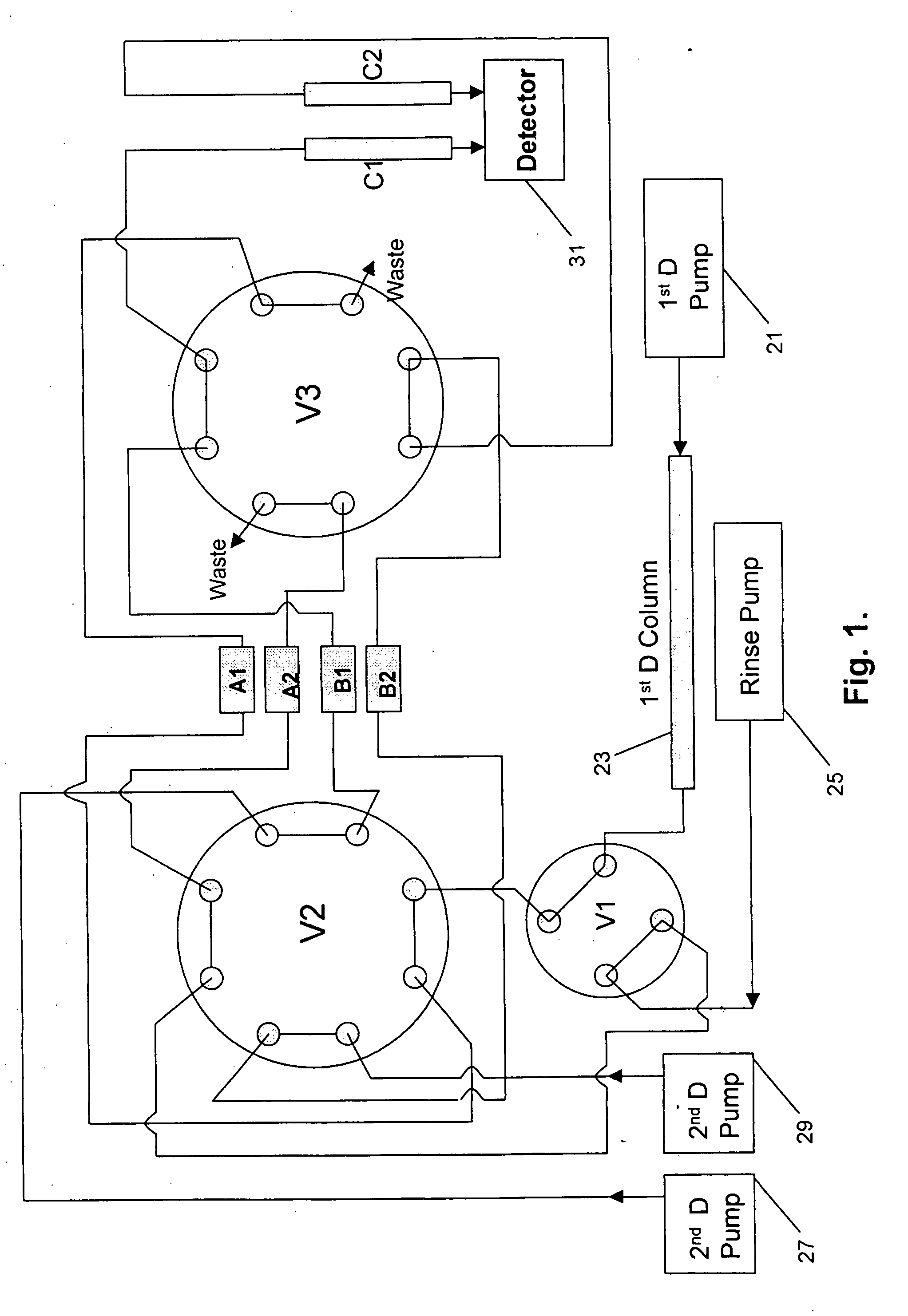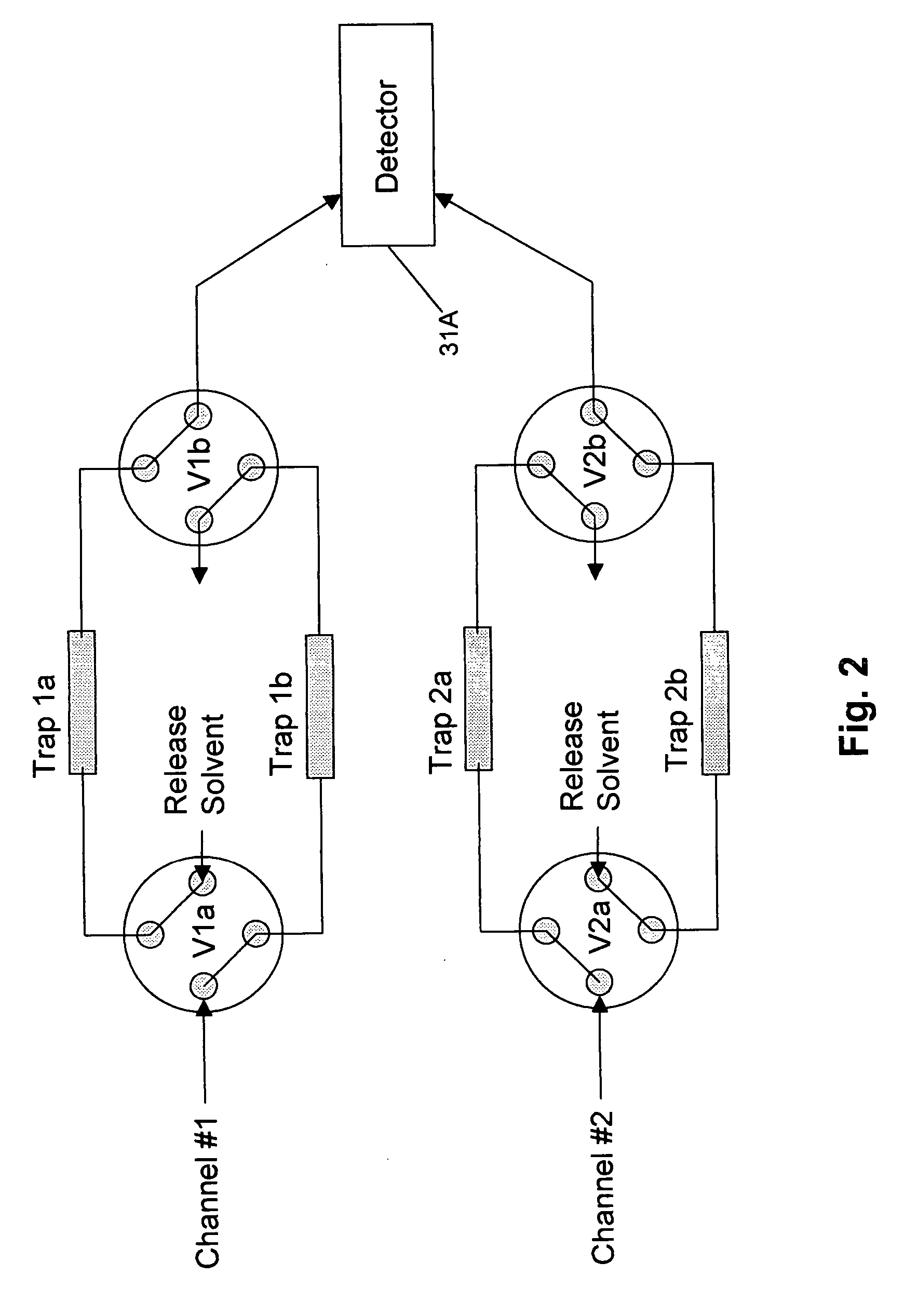Multi-dimensional liquid chromatography separation system and method
a liquid chromatography and multi-dimensional technology, applied in the field of multi-dimensional liquid chromatography separation systems and methods, can solve the problems of limited number of fractions from the first dimension, limited overall efficiency of the separation system, and limited number of fractions, etc., and achieve the effect of high throughpu
- Summary
- Abstract
- Description
- Claims
- Application Information
AI Technical Summary
Benefits of technology
Problems solved by technology
Method used
Image
Examples
Embodiment Construction
[0025] The invention, an improved multi-dimensional liquid chromatography system, has multiple fraction traps to collect fractions from the first dimension. The traps are coupled with an array of second dimensional separation columns. These traps are divided into multiple groups, each group containing the same number of traps as the number of second dimensional separation columns. While one group of traps is in the process of collecting fractions, the other groups undergo the other processes, including the second dimensional separation. Fractions collected in a group of traps are separated by the second dimensional columns simultaneously in a parallel fashion. The processes undergone by the groups rotate until the whole separation task is completed. Because the second dimensional separation is now carried out in parallel, much higher overall separation efficiency can be achieved.
[0026] For simplicity and clarity, integrated and on-line two-dimensional systems are first used as exam...
PUM
| Property | Measurement | Unit |
|---|---|---|
| mass to charge ratio | aaaaa | aaaaa |
| time | aaaaa | aaaaa |
| liquid chromatography | aaaaa | aaaaa |
Abstract
Description
Claims
Application Information
 Login to View More
Login to View More - R&D
- Intellectual Property
- Life Sciences
- Materials
- Tech Scout
- Unparalleled Data Quality
- Higher Quality Content
- 60% Fewer Hallucinations
Browse by: Latest US Patents, China's latest patents, Technical Efficacy Thesaurus, Application Domain, Technology Topic, Popular Technical Reports.
© 2025 PatSnap. All rights reserved.Legal|Privacy policy|Modern Slavery Act Transparency Statement|Sitemap|About US| Contact US: help@patsnap.com



